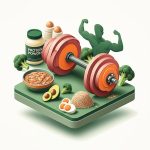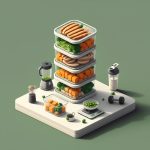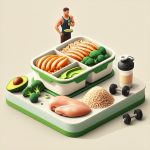Worried about your cheekbones? Lots of people want more defined cheekbones, and it’s totally understandable. This guide will walk you through everything you need to know, from why your cheekbones might look flat to the different ways you can make them more prominent. We’ll look at both natural methods and cosmetic procedures, so you can decide what’s best for you and achieve sculpted cheekbones. We’ll cover things like genetics, aging, and even exercises that might help with cheek augmentation. Whether you’re considering fillers, surgery, or a more natural approach, we’ll give you the information you need to make an informed decision and get the cheekbones you’ve always dreamed of. For more on fillers, see these before & after photos. Let’s get started!
Flat Cheekbones: A Guide to Naturally Fuller Cheeks and Cosmetic Enhancements
Want more defined cheekbones? You’re not alone! Lots of people wish their cheekbones were more prominent. Let’s explore why some people have flatter cheekbones and what you can do about it, whether it’s a subtle change or something more dramatic, enhancing your facial features and overall facial harmony.
Understanding Why Your Cheekbones Might Be Flat
Your genes play a big part in facial structure. Some people are just naturally born with a face shape that gives the illusion of flatter cheekbones. A recessed maxilla, where the upper jaw is set back, can also contribute to the appearance of less prominent cheekbones. This is often hereditary. But it’s not all genetics. Things that happen during childhood, like prolonged thumb-sucking or consistent mouth-breathing, can sometimes affect the growth of your upper jawbone (maxilla), which in turn can make your cheekbones seem less noticeable. These habits can influence overall facial development. As we age, we lose collagen, that important protein that keeps our skin plump and firm; this collagen loss can contribute to a less full appearance in your face, making flatter cheekbones more obvious and impacting overall facial aesthetics. Furthermore, the natural loss of fat pads in the face as we age can reduce cheek volume. Certain medical conditions like Vascular Ehlers-Danlos Syndrome (vEDS) can also affect collagen and skin elasticity, leading to a sunken or flat cheek appearance. Extreme weight loss or eating disorders can also contribute to a gaunt facial appearance and less defined cheekbones.
Boosting Your Cheekbone Appearance Without Surgery
There are several ways to create the look of higher cheekbones without going under the knife or relying on permanent changes; this is especially useful when considering options for facial sculpting.
1. The Power of Makeup: Contouring and highlighting makeup techniques are fantastic for creating the illusion of more prominent cheekbones. It’s like sculpting your face with makeup! Darker shades create shadows, which make certain areas recede, while lighter shades highlight and bring areas forward. Plenty of tutorials are available online to show you exactly how to do this, demonstrating placement techniques and shade selection to enhance cheekbones. Many makeup artists recommend using matte bronzers for contouring and shimmery highlighters on the tops of cheekbones to catch the light. It’s a quick, easy, and affordable way to experiment with different looks and achieve instant facial definition.
2. Dermal Fillers: A Temporary Fix: Dermatologists and plastic surgeons can inject fillers—gel-like substances—into your cheeks to add volume. This instantly gives you the fuller cheek look you desire and provides cheek volume restoration. Common fillers include hyaluronic acid (HA) based fillers like JUVÉDERM® and Restylane®, which are biocompatible and reversible. The effects are temporary, though, usually lasting several months to a year or more depending on the type of filler used and individual metabolism, so you’ll need repeat treatments to maintain the look. Keep in mind there’s always a small risk of bruising, swelling, or infection, so it’s essential to choose a qualified professional with extensive experience in facial contouring and a thorough understanding of facial anatomy.
3. Mewing: The Tongue Technique: “Mewing” is a technique that involves consciously repositioning your tongue against the roof of your mouth. The proper technique involves keeping the tongue flat against the palate with the mouth closed, forcing breathing through the nose. Some people believe it can gradually improve facial structure over time, including making cheekbones appear more defined and promoting forward growth of the maxilla. However, scientific evidence supporting dramatic changes to bone structure is still limited; many consider it a low-cost, non-invasive approach, but it requires consistent effort over a long period, and results may vary widely, impacting jawline definition. While anecdotal evidence suggests potential benefits, it’s not a substitute for proven medical treatments.
4. Facial Exercises: A Gentle Approach: Specific facial exercises aim to strengthen and tone the muscles in your face. While more research is needed to fully understand their long-term effects on cheekbone prominence, some believe these exercises can subtly improve the appearance of the cheek area over time by toning the underlying muscles. Examples include cheek puffing exercises, fish face exercises, and jaw releasing exercises. Finding and following a well-structured routine is important, and it’s a good idea to talk to a physical therapist specializing in facial exercises for personalized guidance. Be prepared for gradual, subtle changes in your facial muscles.
5. Diet and Lifestyle: While not directly affecting cheekbone structure, maintaining a healthy diet and lifestyle can contribute to overall skin health and facial appearance. Staying hydrated, eating a balanced diet rich in vitamins and minerals, and avoiding smoking can improve skin elasticity and volume, potentially making cheekbones appear more defined.
More Dramatic Changes: Surgical Options
For a more significant and permanent change, surgery may be an option.
1. Cheek Implants: Cheek implants are surgically placed devices, typically made of silicone or other biocompatible materials, that add volume and definition to your cheekbones. This is a more dramatic solution offering long-lasting results and cheek augmentation. Implants come in various shapes and sizes to suit individual facial structures and desired outcomes. However, like any surgery, there are risks, including infection, scarring, implant displacement, and potential complications related to anesthesia, so it’s a big decision. The recovery period can also be several weeks, involving swelling and discomfort.
2. Fat Grafting: A Natural Approach: In this procedure, also known as autologous fat transfer, fat is removed from another area of your body (often the abdomen, thighs, or buttocks) through liposuction and carefully injected into your cheeks to add volume and reshape the area. It’s considered a more natural approach because it uses your own tissue, reducing the risk of allergic reactions. However, the outcome isn’t always completely predictable, and some of the grafted fat might be absorbed by your body over time, requiring additional procedures. The survival rate of grafted fat varies, and factors like the surgeon’s technique and the patient’s overall health can influence the results. This procedure also requires surgical intervention and carries the usual risks associated with surgery and facial reshaping.
3. Maxillary Advancement Surgery: In cases where flat cheekbones are due to a recessed maxilla, orthognathic surgery (jaw surgery) can be performed to move the upper jaw forward. This can significantly improve facial balance and cheekbone prominence. This is a more invasive procedure typically reserved for cases with functional issues like bite misalignment or breathing problems.
Weighing Your Options: Pros and Cons
Here’s a quick summary to help you compare:
| Method | Pros | Cons |
|---|---|---|
| Makeup Contouring | Inexpensive, easy, reversible, readily available | Temporary, requires some skill to achieve a natural look |
| Dermal Fillers | Quick results, relatively low risk compared to surgery, reversible | Temporary, potential side effects (swelling, bruising), can be costly, requires repeat treatments |
| Cheek Implants | Permanent, dramatic results | Surgical risks (infection, scarring, anesthesia complications), high cost, irreversible, potential for implant displacement |
| Fat Grafting | Uses your own tissue, more natural-looking results, lower risk of allergic reaction | Surgery required, unpredictable results, some fat absorption is possible, high cost, multiple procedures may be needed |
| Mewing & Facial Exercises | Non-invasive, low cost, potentially improves facial muscle tone | Slow, requires consistency, limited scientific evidence for significant bone structure changes |
| Maxillary Advancement Surgery | Addresses underlying skeletal issues, can improve facial balance and function | Invasive surgery, significant recovery period, potential for complications, reserved for specific cases |
Selecting the Right Path for You
Choosing the best method depends entirely on your personal goals, budget, and how much risk you’re willing to take. Consider factors like the desired level of change, the longevity of results, and potential side effects. It’s vital to have a consultation with a qualified healthcare professional—a dermatologist, plastic surgeon, orthodontist, or other relevant specialist—to fully understand your options and determine the safest and most suitable approach for you and facial volume enhancement. They can assess your facial structure, discuss your goals, and explain the risks and benefits of each procedure. Remember, enhancing your appearance is a personal journey, so take your time and choose a path that feels right. There’s no single “right” answer; the best approach is the one that aligns with your individual needs and expectations.
How to Improve Flat Cheekbones Without Surgery
Key Takeaways:
- Genetics, aging, and weight fluctuations can all contribute to the appearance of flat cheekbones.
- Multiple non-surgical options exist for enhancing cheek
- Gluten Free Meal Prep Ideas for Delicious, Hassle-Free Eating - November 28, 2025
- Gluten Free Meal Prep for Stress-Free and Healthy Eating - November 27, 2025
- Quick And Easy Chicken Thigh Meal Prep For Weight Loss - November 26, 2025










